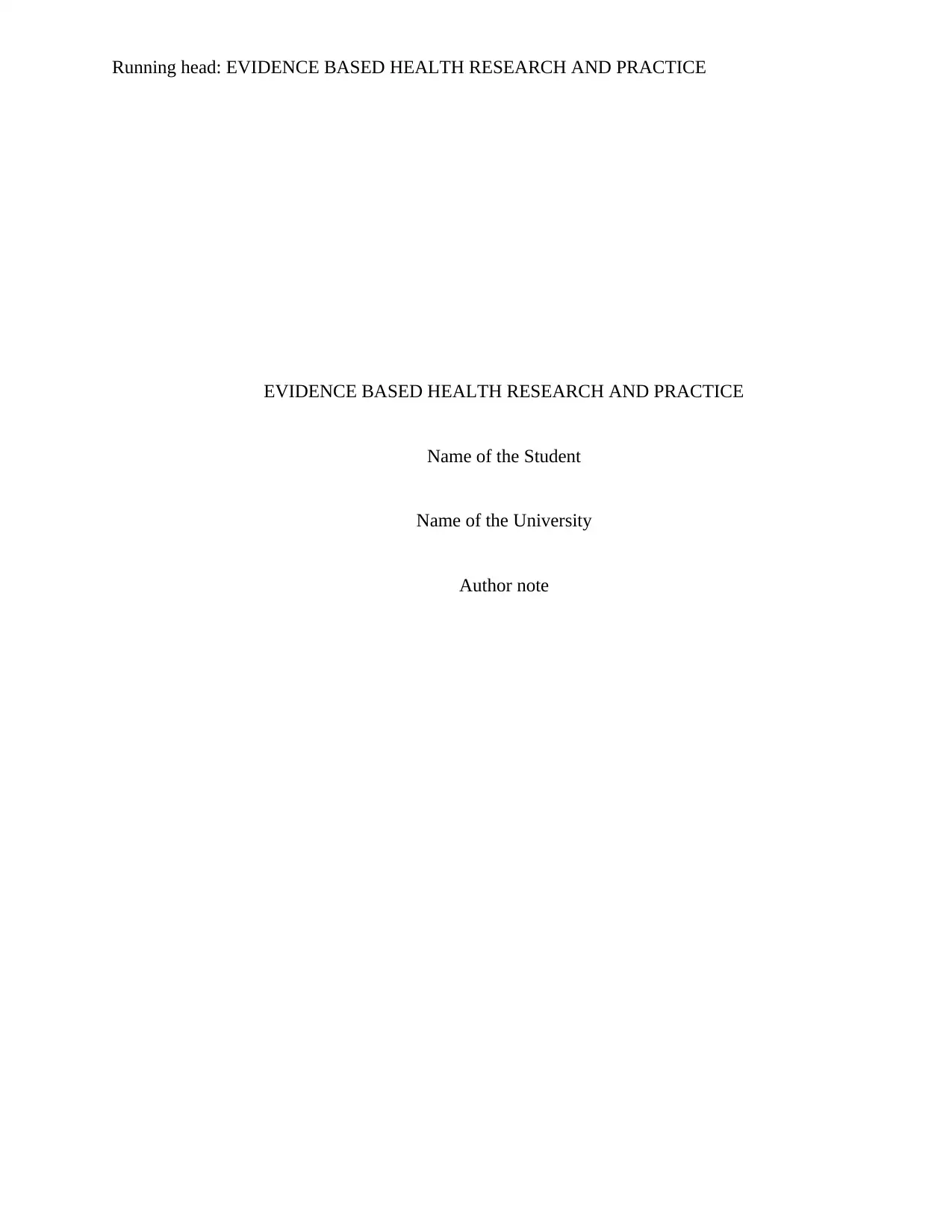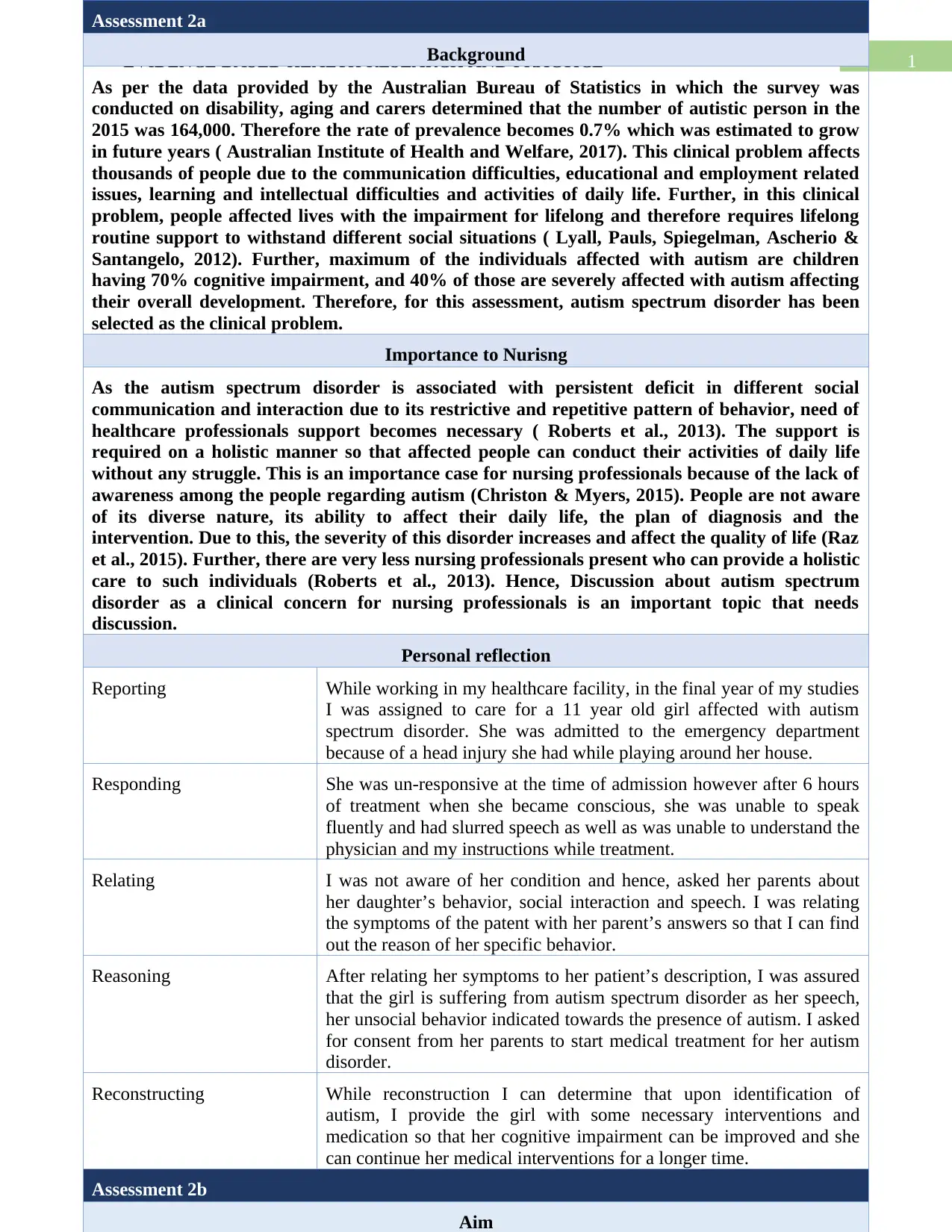Evidence-Based Health Research: Autism Spectrum Disorder in Nursing
VerifiedAdded on 2023/06/09
|4
|673
|107
Report
AI Summary
This report delves into Autism Spectrum Disorder (ASD), highlighting its significance within the nursing profession. It begins by providing background information on ASD, including prevalence rates and its impact on individuals' lives, emphasizing the need for comprehensive support. The report stresses the importance of nursing professionals in addressing the challenges faced by individuals with ASD, particularly due to communication difficulties and social interaction issues. It also includes a personal reflection from a student nurse, detailing a case study involving an 11-year-old girl with ASD, describing the student's experience in assessing and providing care. The report underscores the need for increased awareness and specialized care within the nursing field, offering insights into effective interventions and management strategies. The report covers different aspects of the topic and the role of nurses, which makes it a valuable resource for healthcare students and professionals.
1 out of 4










![[object Object]](/_next/static/media/star-bottom.7253800d.svg)